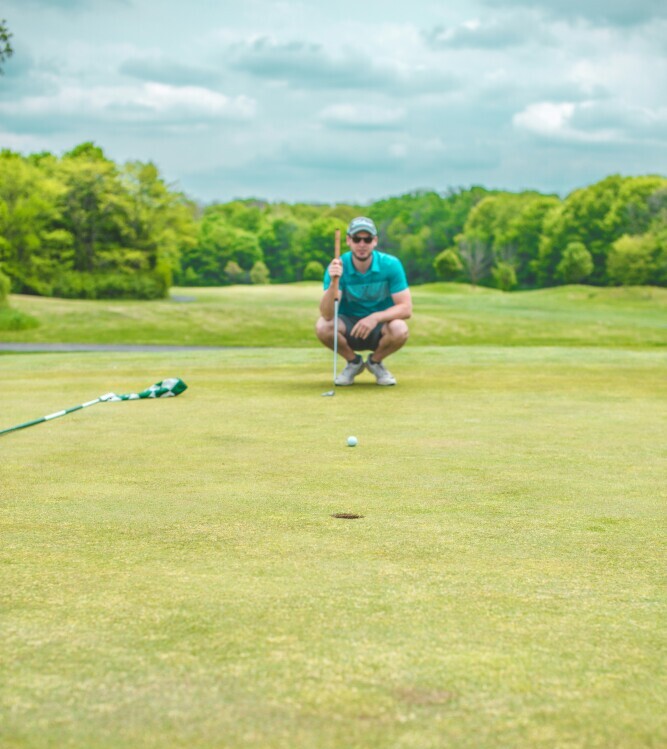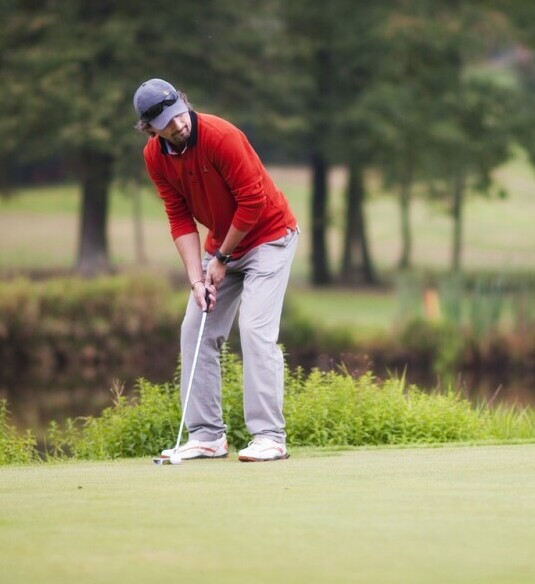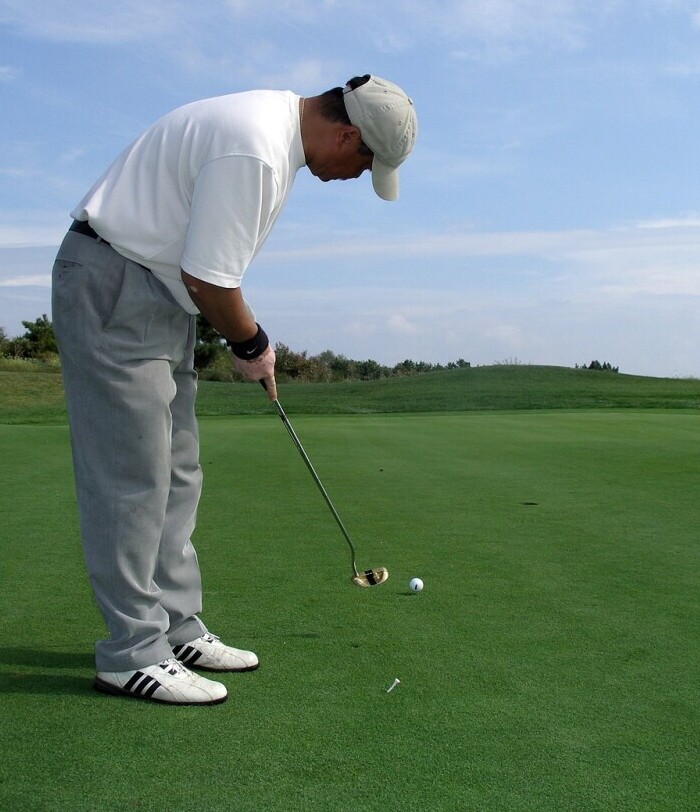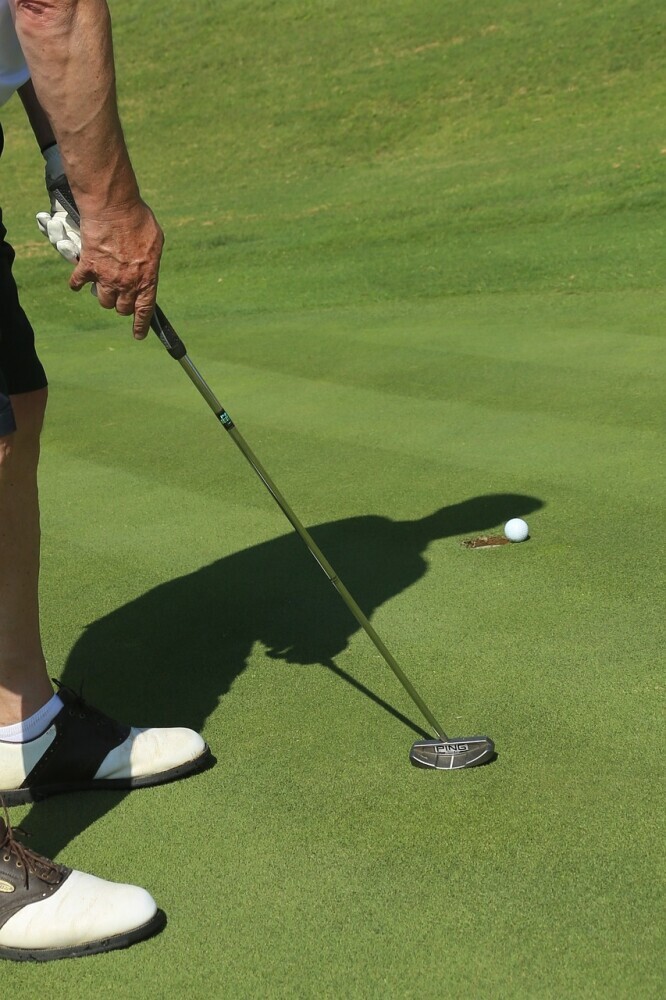How To Judge Putting Speed


Fore! Quick note: a few links here are affiliate links. If you snag gear through them, I earn a small commission — no extra strokes added to your game.
Putting speed is all about how fast the ball rolls after you hit it. Figuring this out can make or break your golf game. When you understand putting speed, you’re more likely to avoid those cringe-worthy putts where the ball either rolls way past the hole or stops dead halfway. Putting is an essential part of golf, and getting your putting speed down will help you lower your score. This is the golf viking, and we’re talking how to judge putting speed.
Now, why should you care about putting speed? Simple—it’s a game changer. Putting isn’t just about getting the ball into the hole; it’s also about how you get it there. The right speed can help the ball stay on a more accurate line to the hole. Speed influences everything: the break in the putt, how the ball reacts to the slope, even the pressure you feel. The speed of your ball will determine the line that your ball takes to get to the hole.
Ever wondered why sometimes your ball ends up somewhere you didn’t intend, even though you’ve got the aim down? It’s usually ‘cause of the wrong speed. Too fast, and the ball doesn’t break as much and rolls too far. Too slow, and the ball breaks more and could stop short. Nailing the speed can dramatically increase your chances of sinking that putt.
To break it down, think of putting speed as the foundation of your putting strategy. Without it, your reads and lines are just guesses. Get the speed right, and you’re setting yourself up for more successful putts, lower scores, and hey, maybe even fewer putter-throwing frustrations. Let’s get into what may affect your putting speed.
Judging putting speed is key to sinking more putts. If you’re also working on accuracy, check out our guide on the most accurate golf putters for better line and pace control.
Ready to level up your golf game? Click here.

Factors Influencing Putting Speed
The layout and texture of the greens play a huge role in determining how the ball will roll. Think about it: the bumpier or more undulating the surface, the trickier it gets to maintain consistent speed. A smooth, level green is like a dream for any golfer—predictable and easier to read. At the same time some courses have extremely fast greens, and hitting your ball too fast can shoot your ball right past the hole.
Weather conditions are another biggie. A sunny, dry day will make the greens faster, whereas rain or dew can slow things down considerably. So, always keep an eye on the weather forecast before hitting the course. You will be playing the greens differently depending on whether they are dry or wet.
Grass type and length affect how fast or slow the ball travels. Shorter grass usually means a quicker putt. On the other hand, longer or thicker grass can slow the ball down, demanding a firmer stroke to cover the same distance. This all comes down to the course you are at, so you will need to judge this as you are at each course.
The slope of the green also comes into play. Uphill putts require more force, while downhill putts need a gentler touch. Understanding these slope dynamics can help you adjust your speed accordingly. Some courses have flat greens that are fairly straightforward, while other courses contain rolling greens that can make judging your putts tricky.
Then there’s the grain of the grass. Putting into the grain (where the grass grows toward you) slows the ball down, while putting with the grain can make it fly. Learning to read the grain can make a big impact on your putting performance. This will all come with experience on the golf course.
Distance control and speed go hand-in-hand. Learn more with our post on the best golf putters for distance control to improve consistency on longer putts.

Techniques to Gauge and Adjust Putting Speed
The practice green is your best friend when it comes to figuring out green speed. Spend a few extra minutes here before your round starts to get a feel for how the ball rolls. Practice your putts from various distances and slopes. This can help you figure out how the greens play before you get out on the course and start keeping score. Getting a heads up on the green conditions can help you figure out your strategy faster.
Watch how other players are approaching their putts. Observing their speed can provide valuable insights. If they’re consistently coming up short or rolling past, you’ll know you may need to adjust your approach accordingly. Just watching someone else putt on the green can give you a good idea of how fast the greens are playing.
Pay attention to certain indicators on the greens. Areas that look shinier usually mean the grass is smoother and faster, while dull areas could indicate a bit more friction. This can clue you in on how much oomph you need behind your putts. Assess the land in front of your ball to get the best idea.
In different green conditions, best practices include adjusting your stroke length rather than force. A longer, smoother stroke generally results in better speed control than trying to muscle the ball. Hitting the ball too hard can often spell trouble to your golf score.
When dealing with downhill putts, it’s smart to focus more on your follow-through. A soft, controlled release will help in maintaining the ideal speed without overshooting the hole. For uphill putts, concentrate on accelerating through the ball to ensure it reaches the hole. The direction of the roll will highly impact how hard or how soft you will need to hit the ball.
Green reading skills are essential here. Look for the highest point around the hole to determine the break direction, and plan your speed to either use or counteract this natural slope as needed. This is all part of being a good putter.
Some golfers need tools to practice speed effectively. Explore our recommendations in golf training aids and how to use them for tempo drills and putting aids.

Mastering Putting Speed for Better Performance
Putting speed isn’t just about getting the ball close to the hole; it also significantly affects the putting line. A putt with the right speed will hold its line better, giving you a higher chance of sinking it. The slower the ball moves, the more it will break, or curve, because of the contours of the green. Conversely, a faster putt will break less but can easily roll past the hole if not controlled well. So your ball line will be directly affected by the speed in which you hit.
Maintaining consistent putting speed takes mental fortitude. One minute you’re crushing it on the practice green, and the next, you’re struggling out on the course. Keeping your mental game strong involves trusting your read and the stroke you’ve practiced. Blacking out distractions and focusing on your routine can help keep your speed consistent. Keep calm and focused on your putt.
Practice, of course, is key. Like anything in golf, mastering putting speed boils down to repetition and learning from your misses. Spend time practicing various distances and types of putts on different green speeds. Switch things up—try putting with different tempos or even alternate your stance to understand what works best for you. Sometimes it’s just a matter of getting used to the course that you are playing.
The role of practice greens can’t be overstated either. They mirror the actual course conditions as closely as possible, making them the perfect testing ground for your putts. Experiment with varying conditions on these greens until finding your groove. Once you get used to the greens on the course, you can plan your putts better.
Making use of drills can also help. Create drills that mimic real game situations. For instance, lay out tees around a hole at different distances and practice lag putts. This not only helps with speed but also with accuracy. There are various putting drills to help you nail down your speed.
In the end, becoming skilled at putting speed is about combining technique with the mental game. Find comfort in your routine. Adapt to different conditions. And most of all, enjoy the process—it’s a crucial part of becoming a better golfer, and putter. I’ll see you out on the golf course, putting warriors.
Budget-friendly putters can still provide good feel for speed. Take a look at our best budget-friendly golf putters for quality without breaking the bank.


